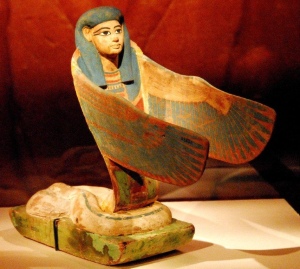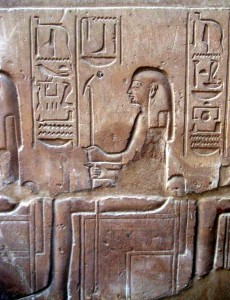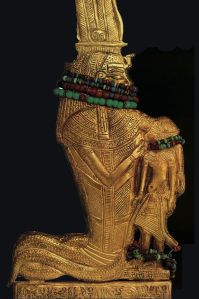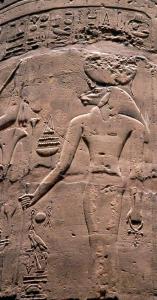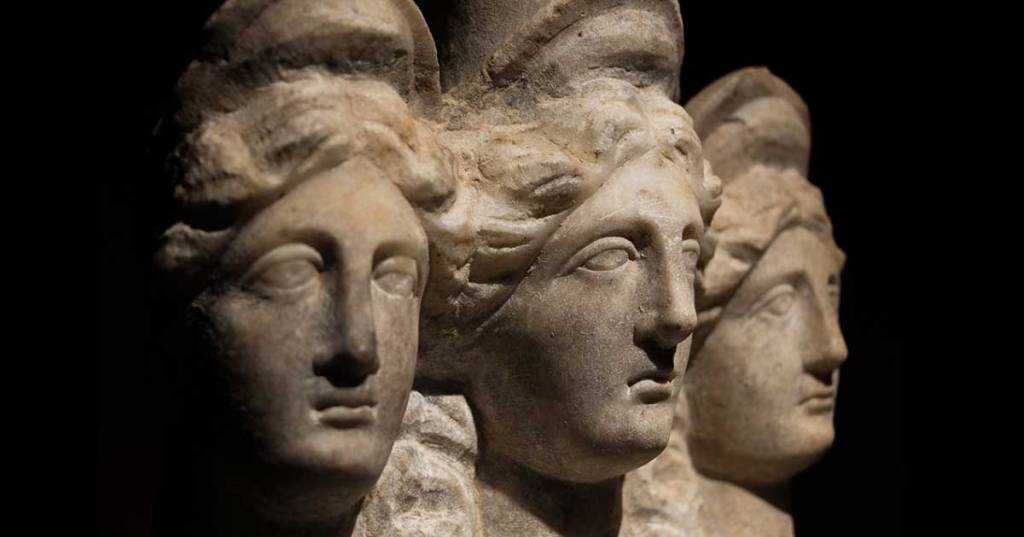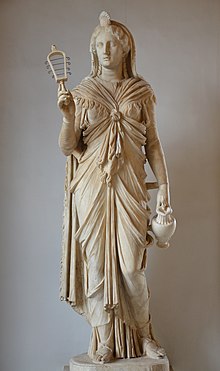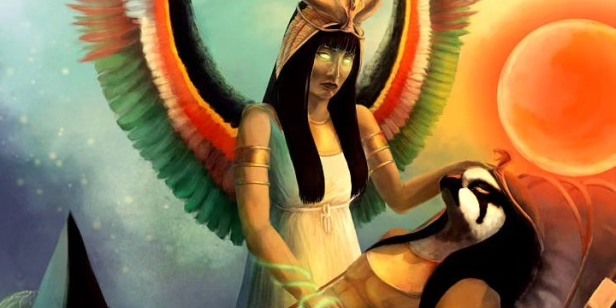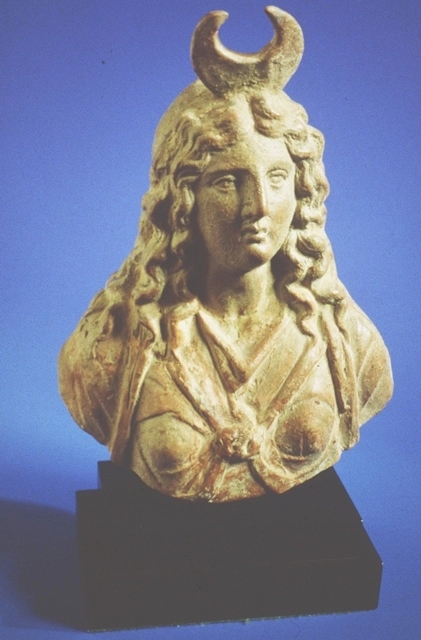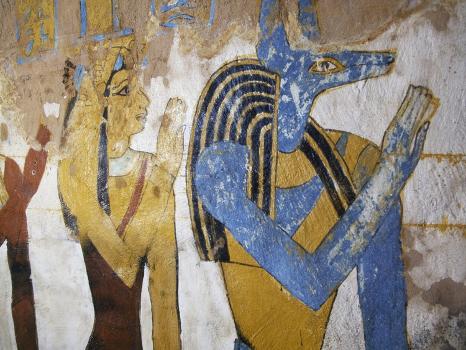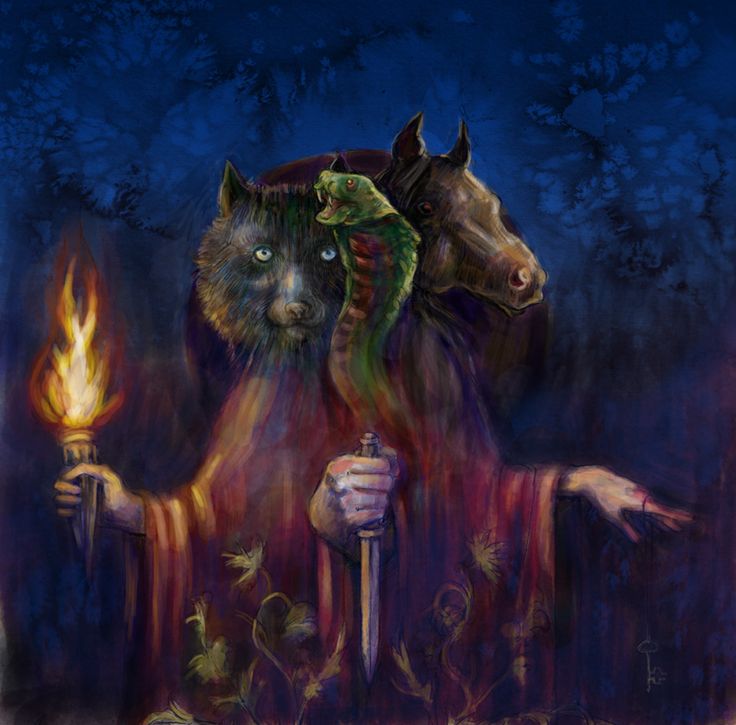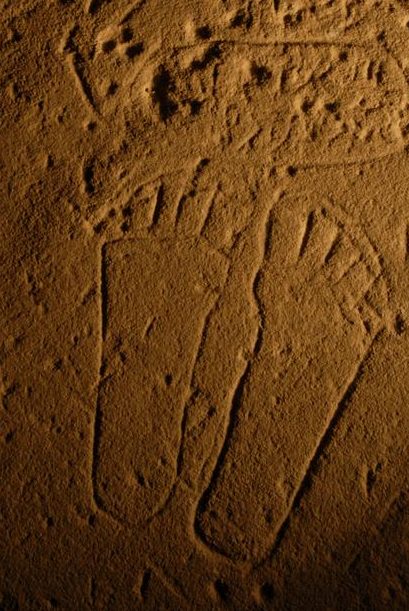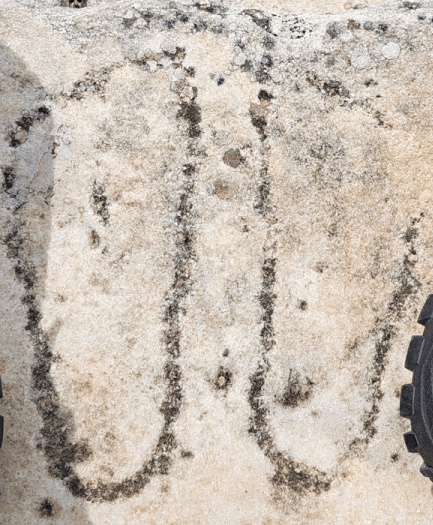The Aethiopika is an ancient Greek novel and the only known work by a writer named Heliodorus. It was written in the second or third centuries CE. It is a tale of love and adventure, and yes of course, Isis is involved. So I thought I’d summarize this tale today, focusing on the part Isis and Her cult play in the story.
The reason this came up was that I was looking at a book about the interactions between the Greek and Egyptian cultures and their influence on each other. It seems that the more researchers look into it, the more they come to the conclusion that, while the influence went both ways, the Egyptian culture seemed to have more weight behind it—if for no other reason than it was the older, more established, and richer culture.
Scholars have long suggested that the Greek “romances” owed at least some debt to Egyptian sources. And yes, these books are romance novels in the classic sense: lovers fall in love, are parted by circumstances, adventure ensues, lovers are finally reunited.
Scholars such as the Classics professor Reinhold Merkelbach suggested that all ancient Greek novels (there are only five complete ones extant, with references to about 20 more) were informed by myth—but most especially by the Isis-Osiris complex of myths. Interesting, no? At the time of the Aethiopika, the myths of Isis and Osiris certainly would have been the ones most well known to Hellenes. Merkelbach further suggested that such tales were meant for the initiates of the Greco-Roman Mysteries, who would have understood the deeper meaning behind all the hidden clues. This theory has not generally been accepted, however.
Yet, at the very least, we can easily see the overall structure of the classic romance novel in the story of Isis and Osiris: lovers are in love, are parted by murder, the adventure of picking up the pieces ensues, and lovers are finally reunited, though one of Them is transformed.
The story of the Aethiopika reached far beyond the borders and time of the ancient Hellenistic and Roman worlds. The tale was influential all the way into the 17th and 18th centuries. That’s why all the illustrations I found for this article do not look remotely ancient Greek, Egyptian, or Ethiopian.
The Aethiopika is the love story of Theagenes and Chariklea. We meet Chariklea at the very beginning of the tale as a gang of Egyptian thieves approaches the scene of a beached pirate ship, with its crew slain, while they were in the midst of a celebratory banquet. As the robbers approach to scavenge, they see the beautiful Chariklea among the living. In sorrow, she is looking at a handsome young man who is wounded and perhaps dying. They exchange words and she tells him that, should he die, she will kill herself with the knife she bears.
She rises to go to him—and the brigands step back, afraid. They think she is a Goddess, either “Artemis or Isis, the divine patroness of Egypt.” Others think she may have caused the slaughter as a frenzied priestess. Finally, they gain the courage to approach. Chariklea sees them, but continues to tend to Theagenes. Then, more thieves arrive, chase off the first group, and capture Chariklea and Theagenes. The prisoners are taken to the house of Thyamis, the chief thief, and given another prisoner as Greek interpreter. The interpreter, Cnemon, begins to treat Theagenes’ wounds with a healing herb.
We learn that Chariklea believes that Apollo is punishing the two of them because she and Theagenes fell in love with each other during the Pythian Games at Delphi and ran away together (she had been promised to another man). Chariklea had been abandoned by her Ethiopian parents, but was raised by a priest of Apollo at Delphi, becoming a priestess of Artemis. The pair of lovers fled Delphi, assisted by Kalasiris, an Egyptian priest of Isis.
It’s complicated.
Anyway, during the night, Thyamis has a dream. He dreams he is in Egyptian Memphis, his home town, and there visits a temple of Isis. The Goddess entrusts the care of Chariklea to him, but Her commands come as a riddle, which he decides to interpret as telling him that he should take her as a wife.
But now a group of warriors come to attack the thieves. Chariklea is taken to a cave, while Theagenes must fight with the thieves. During battle, Thyamis realizes the true meaning of Isis’ dream message: that he will lose the battle and lose Chariklea. Pissed off at Isis, he goes to Chariklea’s cave to kill her—since he can’t have her; you know how it is—but in the dark mistakenly kills another woman.
Theagenes and Cnemon escape the battle, but believe that Chariklea is dead. Thyamis is captured alive, for it turns out this group of warriors was sent by Thyamis’ younger brother, who had earlier stolen his rightful priesthood from him. But Theagenes and Cnemon find Chariklea alive. The group decides to go south, further into Egypt, to find Thyamis and seek revenge for his killing of the other woman, who Cnemon knew.
When they get to Khemmis, they are reunited with Kalisiris, the priest of Isis who helped them escape Delphi. He had believed Theagenes and Chariklea were dead and is thrilled to find them alive. We learn that, as a pious priest, Kalisiris drinks only water and never neglects to pour libations to the Deities. He is also a vegetarian, eating only nuts and fruits. In the course of events, Kalisiris tells how he came to be in Delphi.
A Thracian woman named Rhodopis came to Egypt, settled in Memphis, and set up shop as a courtesan. She would visit the temple of Isis where Kalisiris was high priest, where she made abundant offerings to the Goddess, for her business was thriving. Though Kalisiris practiced all types of priestly austerities, he could not resist Rhodopis’ charms and he fell hard for her (apparently after merely seeing her). His answer to escaping Rhodopis’ fatal allure was to leave his priesthood and his native Egypt to wander.
We further learn that Kalisiris is skilled in divination and had divined that his two sons were destined to battle each other. (Can you guess yet who Kalisiris’ sons might be?) Having heard of Delphi as a refuge for wise men, Kalisiris traveled there, arriving just at the time that the Pythia was prophesying. He received an oracle from the God telling him to take heart for he will be able to return to Egypt, but in the meantime to be the friend of Apollo.
The status of “friend of Apollo” greatly enhanced Kalisiris’ reputation and he joined a group of philosophers who peppered him with questions about Egypt and its Deities. Through Chariklea’s foster-father, Kalisiris meets her and witnesses as she and Theagenes fall in love instantly. And so, he is determined to help them.
So now our lovers, their companion, and Kalisiris are back in Egypt. There, they are involved in a number of adventures in which one or the other of the lovers gets entangled with other characters. A Persian governor’s wife falls for Theagenes, so she makes showy offerings at the temple of Isis, all the while lusting for Theagenes. At the same time, Kalisiris is devoutly praying before Isis about his sons and his own future. Previously, he had been reunited with his elder son Thyamis, the former chief thief, and even better, the two warring brothers were reconciled. Kalisiris declares that the eldest son, Thyamis, should inherit his Isiac priesthood for Kalisiris’ senses his own death approaching. The governor’s wife tries to frame Chariklea for poisoning, so she can have Theagenes. This, of course, fails. More adventures eventually find both Chariklea and Theagenes captured by the Ethiopian king—who is Chariklea’s real father, but who does not yet know her.
As sexual virgins, Chariklea and Theagenes are perfect sacrifices and are about to be sacrificed to the Sun and Moon, Deities of the Ethiopians. But wait! Due to a necklace that Chariklea’s mother had placed about her neck when she abandoned Chariklea, the Ethiopian king finally recognizes his true daughter. All is well. Chariklea and Theagenes are married and live happily ever after.
To be honest, the Aethiopika is a bit of a tedious tale. Yet, the reason I was reading this story was for the Isis lore.
For example, we’ve learned about the pure-water-and-vegetarian diet of Kalisiris, a high priest of the Goddess. We know he is always pouring libations for the Goddess and any other Deities he encounters. We find that he is subject to visions and is a good diviner. We know that he must keep himself chaste—and so removes himself from Rhodopis’ disturbing presence.
From Thyamis’ dream, we see that Isis can send dreams, even in Loxian riddles, that can be misinterpreted by the dreamer. From the story of the Persian governor’s wife, we learn that not all rich offerings are sincere. In another part of the tale, we discover that offerings might be made to Isis if one has a bad dream. In yet another, the text tells us that initiates of the Mysteries call Isis the Earth and Osiris the Nile (but our speaker would reveal nothing more of those Mysteries). Oh, and we also learned that the love story of Isis and Osiris may well be the prototype for ancient Greek romances, and thus the roots of our modern romance novels, too.
Our Goddess can for found everywhere—for Isis is all things, and all things are Isis.
















































































































































